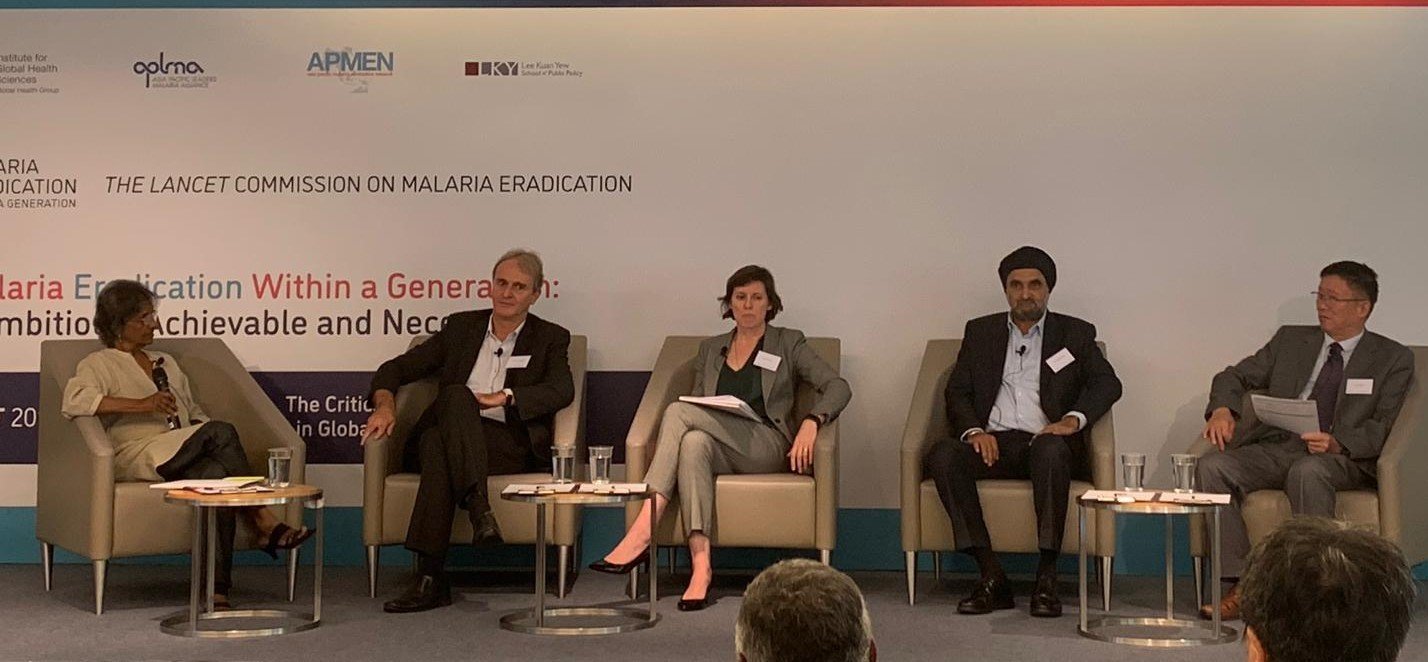
Photo credit: SPAG
Asia-Pacific has seen remarkable success in its fight against malaria. The recent East Asia Summits saw the regions’ Heads of Government and Foreign Ministers reaffirm resolve to eliminate the disease by 2030. The commitment and new resources have led to plummeting malaria incidence and death rates across the region.
Building on this success, global experts now believe that we can eradicate the disease from the world by 2050, according to a new report by The Lancet Commission on malaria eradication.
The Asia-Pacific launch of the Commission's seminal report was held on 8th October at the National University of Singapore. The report synthesizes existing evidence with new epidemiological and financial analyses to demonstrate that – with the right tools, strategies, and sufficient funding – the eradication of the disease is possible within a generation. Authored by 41 of the world’s leading malariologists, biomedical scientists, economists, and health policy experts, the Commission’s report is the first peer-reviewed, the academic document of its kind.
“For too long, malaria eradication has been a distant dream, but now we have evidence that malaria can and should be eradicated by 2050,” said Sir Richard Feachem, Co-chair of The Lancet Commission on malaria eradication and Director of the Global Health Group at the University of California, San Francisco (UCSF).
The region plays a critical role in global malaria eradication
While parts of the world have seen a recent resurgence of malaria cases, Asia-Pacific continues to show encouraging signs of progress. Between 2016 and 2017, India alone achieved a 3 million (24%) drop in cases—the only country among 11 high-burden countries to report a reduction in cases.
Many countries once plagued by malaria, including Singapore and Sri Lanka, have eliminated malaria, and momentum seems to be building. China, Malaysia, and Timor-Leste recently reported zero cases of indigenous malaria, and Bhutan and Nepal are on the cusp of elimination.
“The expertise and technology to eradicate malaria are now available here in the region. Whether we succeed is actually a matter of political will,” said Dr Vivian Balakrishnan, Singapore’s Minister for Foreign Affairs. “Countries like Singapore that have eliminated malaria are supporting their peers. The experience gained in the Asian elimination journey can support the effort to eradicate malaria globally.”
This great momentum must be maintained to overcome the threat of drug-resistant malaria looming over the Greater Mekong Subregion (GMS) and beyond. Multi-drug resistant malaria first emerged in Cambodia and Thailand in 2008 and has since been detected in Lao PDR, Myanmar, and Viet Nam. Until eradication is achieved, drug resistance will pose a constant threat to progress and will require ongoing investments.
“If drug resistance were to spread, there is a risk that malaria will resurge and jeopardize the successes achieved and investments made,” said Professor Arjen Dondorp, one of the Commissioners and Deputy Director and Head of Malaria Research, Mahidol Oxford Tropical Medicine Research Unit, Thailand.
Fight smarter, bend the malaria curve
Asia-Pacific’s war on malaria presents both opportunity and urgency. The Commission calls for specific and deliberate actions to bend the curve and accelerate the decline in malaria transmission in the region and globally.
First, effective management and implementation of malaria programs are necessary. Stronger program management capacity, nimble data-driven decision-making, active community engagement, and partnership with the private sector will greatly improve program implementation. Secondly, innovations are vital to overcoming biological challenges to eradication, including new diagnostics, drugs, and vector control as well as novel approaches that can address the region’s most pressing technical challenges of outdoor biting, resistance, and meeting the needs of communities at high risk for malaria.
Lastly, malaria eradication will require increased annual investment. Global malaria eradication is likely to cost somewhere between US$6 billion and US$8 billion per year. Currently, the world spends around US$4.3 billion. The Commission proposes a significant increase in government malaria spending. The upward trend of domestic financing for malaria in Asia-Pacific must be sustained.
“Strong leadership and accountability are critical to bend the curve. The Commission proposes that the driving force for global eradication must be a strong push for regional elimination. Asia-Pacific is truly leading the charge with 23 leaders now committed to ending malaria here by 2030,” said Dr Benjamin Rolfe, CEO of Asia Pacific Leaders Malaria Alliance and a member of the Commission. “If we remain steadfast, our actions here in the region will propel us towards a world without malaria by as early as 2050.”




